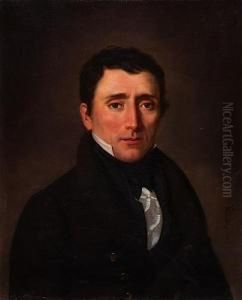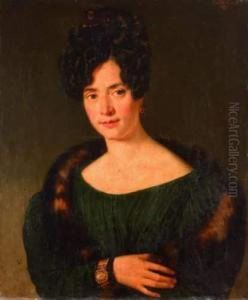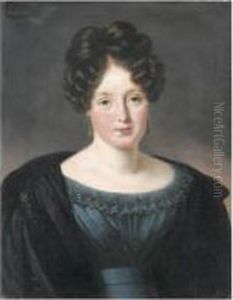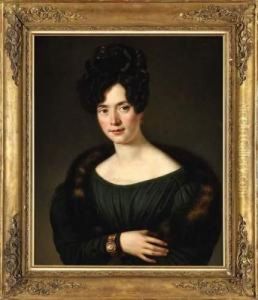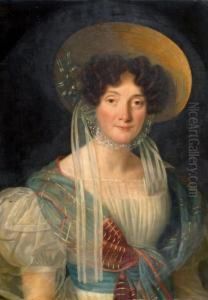Joseph Jean Vaudechamp Paintings
Joseph Jean Vaudechamp was a French artist born in 1790, whose career spanned a significant period of the 19th century, a time of considerable social, political, and artistic change in France and Europe. Vaudechamp, though not as widely recognized today as some of his contemporaries, played a notable role in the artistic movements of his time, particularly in the realms of portrait painting. His work is characterized by its detailed depiction of the human form, a mastery of light and shadow, and a keen insight into the personalities and characters of his subjects.
Vaudechamp originally hailed from France, where he received his artistic training and began his career. Like many artists of his era, he was deeply influenced by the Neoclassical and Romantic movements that dominated European art in the late 18th and early 19th centuries. These influences can be seen in the classical poses and emotional depth of his portraits. Despite his skills and the quality of his work, Vaudechamp struggled to achieve the same level of fame and recognition as some of his peers during the early part of his career in France.
In search of new opportunities, Vaudechamp made the significant decision to move to the United States, specifically to New Orleans, Louisiana, in the 1830s. This move proved to be pivotal in his career. New Orleans, with its vibrant culture and growing wealth, offered a fertile ground for portrait artists. The city's elite, eager to showcase their status and affluence, became patrons of the arts, commissioning portraits to display in their homes. Vaudechamp quickly established himself as a sought-after portraitist, capturing the likenesses of many prominent local figures of the time. His American period is particularly noted for its productivity and the high quality of work he produced, which includes some of his most celebrated portraits.
Despite his success in the United States, Vaudechamp maintained strong ties to France, returning there periodically. His career thus straddled two worlds, allowing him to bring European artistic sensibilities to his work in America while also incorporating elements of his American experiences into his work upon his return to France. Joseph Jean Vaudechamp died in 1866, leaving behind a legacy of work that, while perhaps not as well-known today, offers valuable insight into the transatlantic cultural exchanges of the 19th century and the development of portrait painting as a genre during this period.
